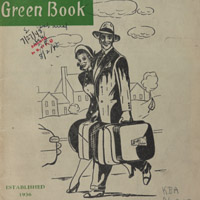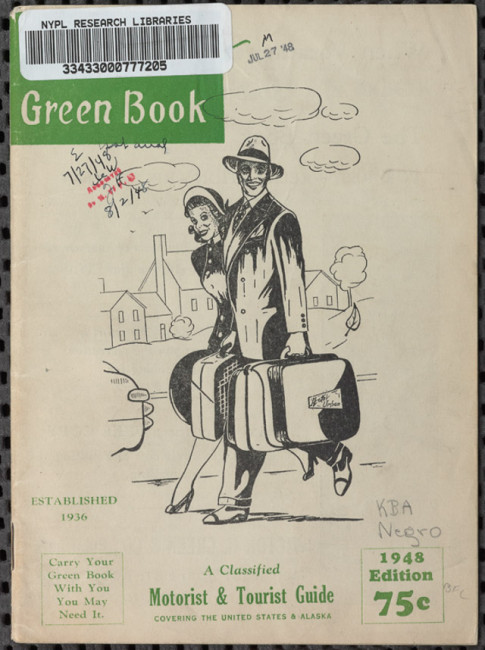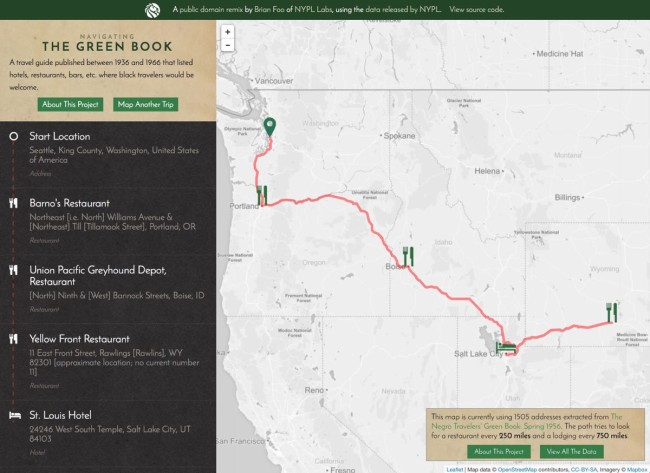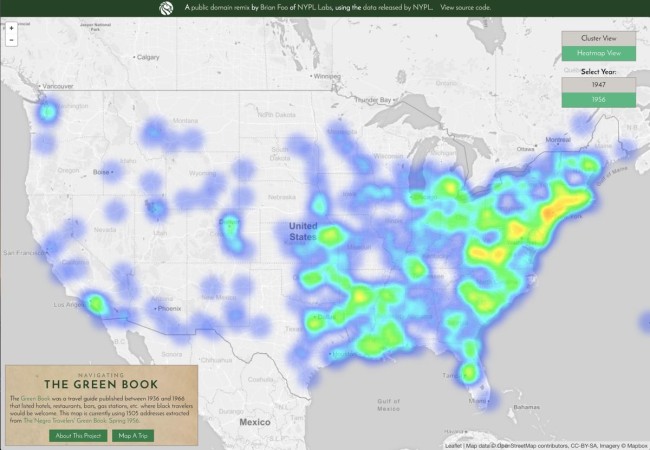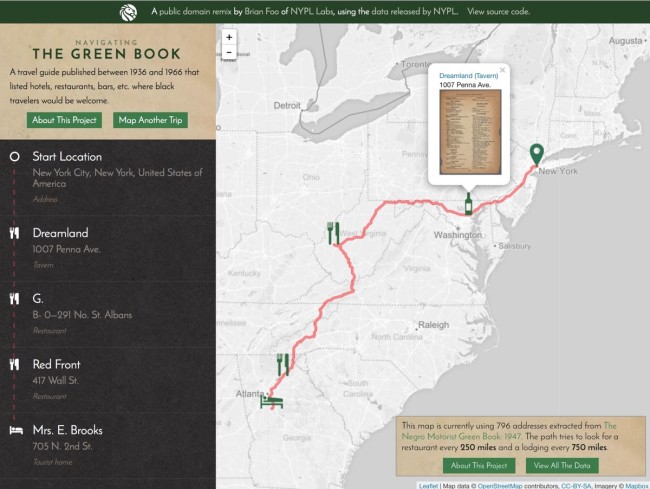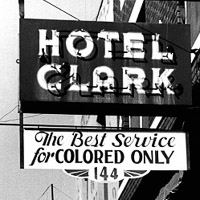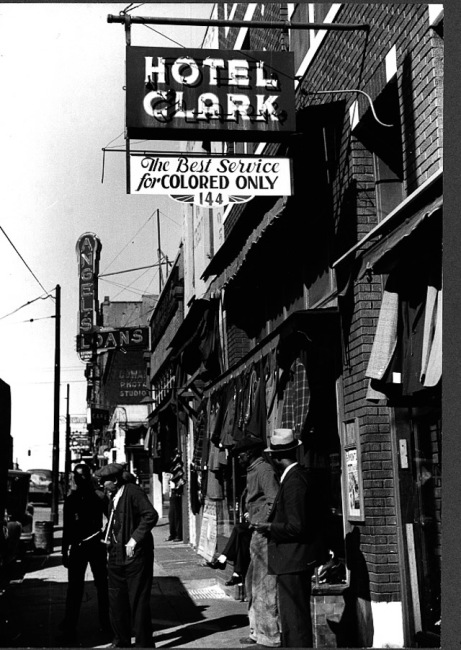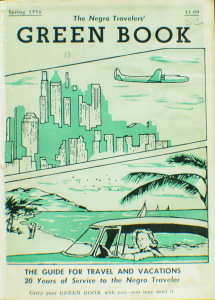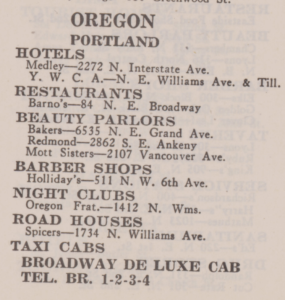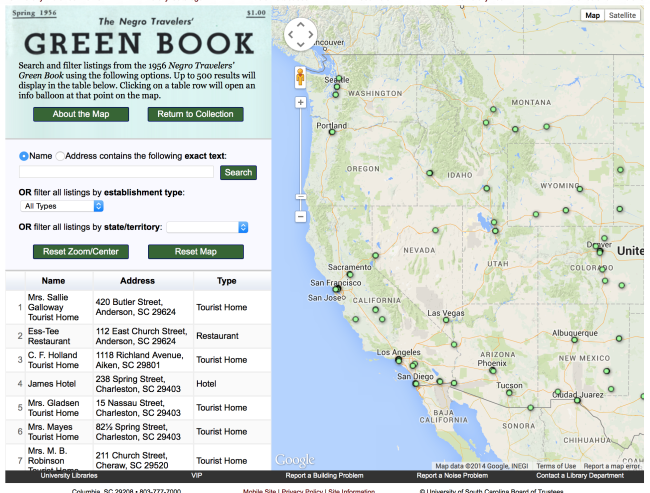Between 1936 and 1966, the “Negro Travelers’ Green Book” (or the “Green Book” as it was commonly known) was an essential travel guide for Black Americans. It was created by Victor H. Green, an enterprising New York mailman and Black-American travel agent. Organized by state and city, it listed business who would accept black clientele – hotels, restaurants, filling stations, tailors, beauty parlors. It also included travel themed articles featured black-friendly resorts and sites. For more see my post Segregated America’s TripAdvisor.
Enter the world of the Black traveler in post-war America who faced humiliation, insults and fear of being stranded without travel essentials.
The New York Public Library’s Digital Collections recently launched Navigating The Green Book, a public domain remix by Brian Foo of NYPL Labs. The mapping tool give the user insights into the world of the Black traveler in post-war America who faced humiliation, insults and fear of being stranded without travel essentials. Racist social codes made “driving while black” a hazard in some locales. As the Green Book noted its the cover, “Carry Your Green Book With You – You May Need It.”
Users can enter in two US addresses and determine what Green Book recommended services they’d find along the route (two data sets are currently indexed – 1947 and 1956.) Here’s a 1956 trip from Seattle to Salt Lake City. Only three restaurants and one hotel.
Users can also use a cluster or heat maps to visualize the the geotagged data. Here’s a “heat map” of US in 1956. Yellow / red colors indicate more Black-friendly services.
Finally at the listing level, the user can click into any of locations and get specific metadata including a link to a digitized version of the Green Book page for the service. (1956 Green Book)
